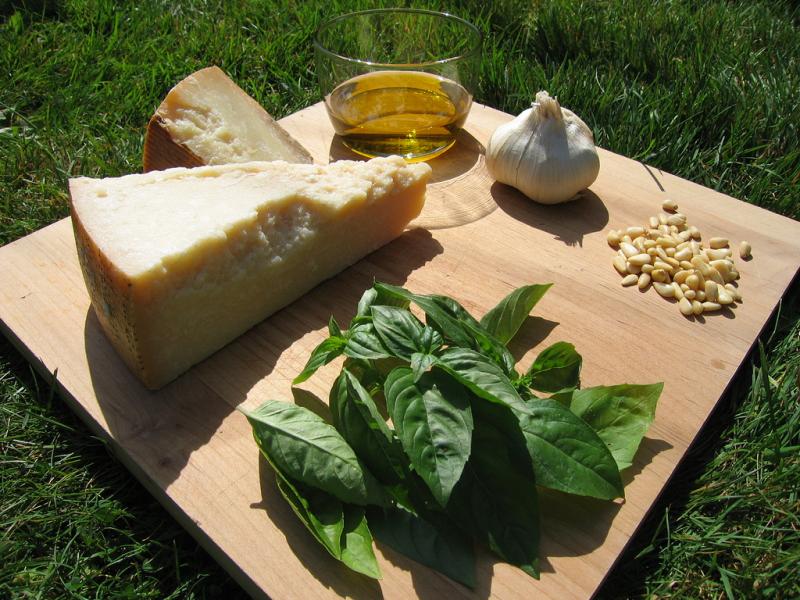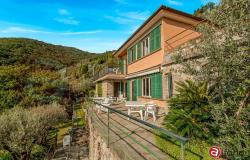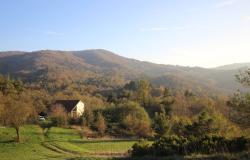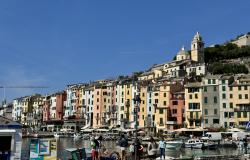Ligurian Pesto is the second most popular sauce for pasta after the tomato based one and, certainly, the most popular one when it comes to cold sauces.
The name Pesto derives from the Italian verb to crush, "pestare", because for a real Ligurian Pesto, the ingredients have to be crushed using a wooden pestle and marble mortar.
The classic ingredients for Pesto alla Genovese are basil grown in Liguria (Ocimum Basilicum), coarse sea salt, pine nuts, garlic, Ligurian extra virgin olive oil and grated Pecorino Romano cheese of the best quality.
Nowadays, you can find commercial ready pestos in all forms, often produced with low quality nuts, cheese and olive oil. And with a simple recipe such as this one, using top quality ingredients is of fundamental importance. This is why the Liguria Region in collaboration with local producers and restaurateurs, set up the Consorzio del Pesto Genovese to protect the original recipe and apply for a STG lable, Specialità Tradizionale Garantita (Guaranteed Traditional Specialty), which we hope they will get soon.
In the meantime, if you want to prepare a real Pesto alla Genovese, here is the official recipe by the Consorzio del Pesto Genovese.
Ingredients: (Makes: Sauce for 600 g of pasta)
Genoese basil - 50 grams, preferably young and fresh.
Ligurian Extra Virgin Olive Oil - 1/2 cup
Grated Cheese - 6 tablespoons of Parmigiano Reggiano DOP or Grana Padano DOP and 2 tablespoons of Pecorino
Garlic - 2 cloves
Pine nuts - 1 tablespoon of nuts from the Mediterranean
Walnuts - (optional) 1 tablespoon may be substituted for pine nuts
Coarse Sea Salt - a few grains
Preparation:
Wash the basil in cold water and set aside to dry on a towel.
In the mortar, crush the cloves of garlic with a few grains of salt until the garlic has softened. Begin adding basil leaves (but don't add all at once!)
The essential oils of basil are stored in the veins of the leaves. For the best taste, you must be careful not to tear or shear the leaves. Use a gentle circular motion, slowly crush the basil by moving the pestle around the edges of the mortar.
When you notice a bright green liquid being drawn from the leaves, it is time to add the pine nuts.
Once softened, add the cheeses, and finally the olive oil in a very thin stream.
Preparation should take place at room temperature and the sauce should be served immediately to avoid oxidation. So pour it over the pasta, possibly linguine or strozza preti, and enjoy!





